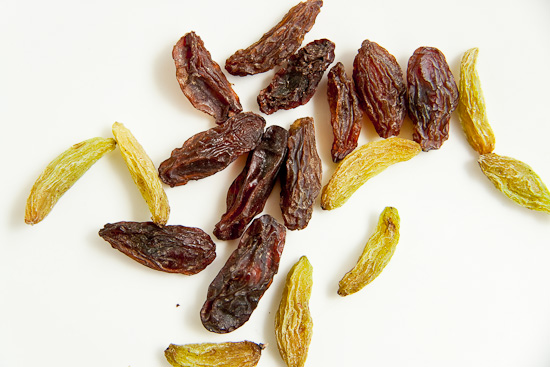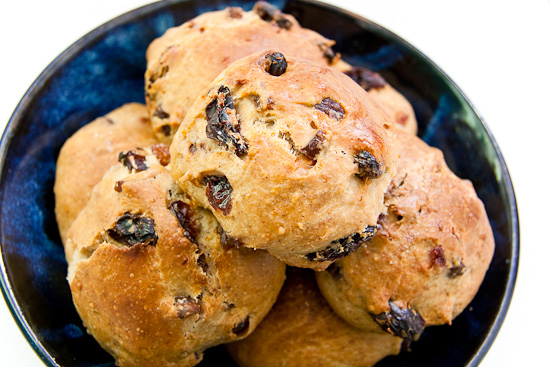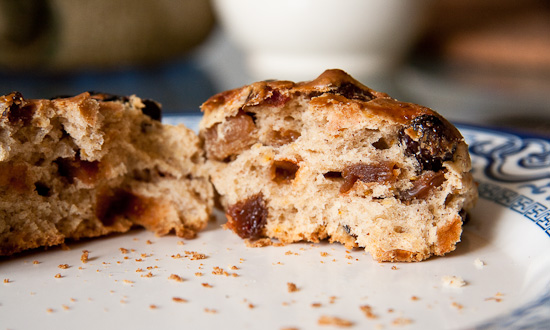Or hot pagan buns? Hot nihilist buns? As they rather lack that defining cross, perhaps they really shouldn’t be called hot cross buns. But they’re not quite in the spirit of nihilism, either, being full of candied haw berries (but of course), along with some of the most delightful raisins I’ve come across.
Usually I’m not terribly fond of raisins – too sweet when raw and too sour when baked. And Xinjiang raisins are so highly praised and highly touted here that my instinct is to dismiss it all: surely it’s just hype and marketing.
Then one day, at one of those ‘shopping festivals’ that grace Ditan Park every so often, my eye was caught by a raisin seller who had some ten different varieties of raisins, all grown, she said, in Xinjiang – China’s western region that resembles Central Asia or Turkey far more than it does the rest of the country. Suddenly, I had to have some of those gigantic raisins, even if I spent every last kuai of the little cash I had with me.
 I came away with a half jin each of the green “banana king” raisins (香蕉王 xiangjiao wang, RMB 38 per 500g) and purple “horse nipple” raisins (红马奶 hong manai, RMB 19 per 500g) – so named for their long shape (or so they say). These latter raisins were seeded, but not in an unpleasant way: the seeds add a good crunch to the sweet, juicy fruit, rather like what nut pralines do for a truffle. Plus, grape seeds are supposed to add years to your life.
I came away with a half jin each of the green “banana king” raisins (香蕉王 xiangjiao wang, RMB 38 per 500g) and purple “horse nipple” raisins (红马奶 hong manai, RMB 19 per 500g) – so named for their long shape (or so they say). These latter raisins were seeded, but not in an unpleasant way: the seeds add a good crunch to the sweet, juicy fruit, rather like what nut pralines do for a truffle. Plus, grape seeds are supposed to add years to your life.
As for flavor, these raisins put Sun-Maid to shame. Nearly double the size of regular raisins, they’re densely sweet and moist – you can almost taste the hot desert sunshine. The purple ones have a dark, wine-y flavor, while the green ones are more subtle and floral. They were almost too good to bake – my instinct was to savor them one by one – but of course, their quality also enhances anything they’re prepared with.
 Which brings me to the other reason why these hot cross buns were so good: sourdough. Instead of yeast, they were leavened with 200 grams of natural levain, which makes the crumb soft, moist, and deliciously complex in flavor. (After eating so much sourdough, I’m starting to find yeast breads flat in flavor.) The recipe requires long, slow rises, but the result is worth all the effort and kneading (it did make me too lazy to do crosses, however). There’s just a hint of sourness; what comes through are the rich buttery spices, the hefty raisins, and the tart notes of the haw berries.
Which brings me to the other reason why these hot cross buns were so good: sourdough. Instead of yeast, they were leavened with 200 grams of natural levain, which makes the crumb soft, moist, and deliciously complex in flavor. (After eating so much sourdough, I’m starting to find yeast breads flat in flavor.) The recipe requires long, slow rises, but the result is worth all the effort and kneading (it did make me too lazy to do crosses, however). There’s just a hint of sourness; what comes through are the rich buttery spices, the hefty raisins, and the tart notes of the haw berries.





































